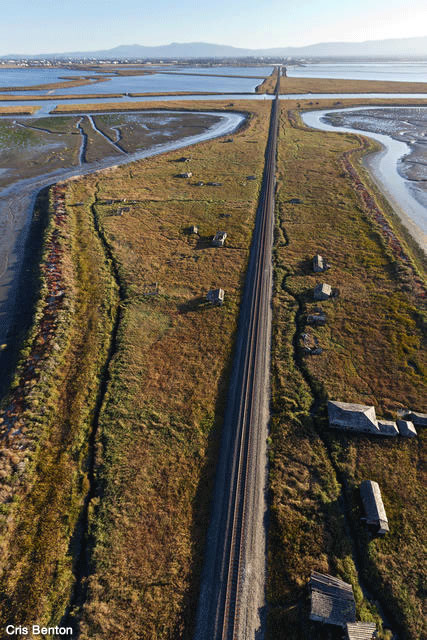PLAN FOR BAYLANDS TO MIGRATE
Plan for Baylands to Migrate Landward in the Long Term
 Baylands will migrate inland and therefore continue to function as sea level rises, but only if we plan our shoreline to allow this to occur. There is thus a need to identify and conserve the “transition zone,” where baylands transition to uplands (From a scientific perspective, transition zones are where one can see evidence of both watershed and tidal processes at work). Today’s transition zones are the baylands of the future as sea levels rise.
Baylands will migrate inland and therefore continue to function as sea level rises, but only if we plan our shoreline to allow this to occur. There is thus a need to identify and conserve the “transition zone,” where baylands transition to uplands (From a scientific perspective, transition zones are where one can see evidence of both watershed and tidal processes at work). Today’s transition zones are the baylands of the future as sea levels rise.
Therefore a program of assessing and prioritizing available areas needed for bay land migration is required. This program should include potential transition zone site assessment, applied research, and public reporting to ensure that we have a solid knowledge of the potential for marsh migration and how we can best achieve this goal in places it is determined to be appropriate. These areas can be identified and enhanced to provide habitat and other benefits well in advance of the need for marshes to move.
At the same time, we can also discourage the development of new assets and infrastructure in present and future flood-hazard zones, including transition zones, where they may constrain restoration and other valuable climate-change adaptation options (such as those that protect adjacent communities). In some areas, providing adequate space may involve protecting new areas located landward of existing marshes or transition zones. Where major infrastructure improvements are contemplated, opportunities will also arise to incorporate migration into capital plans. Adaptation strategies can be developed in tiered or phased ways that ensure new options are explored and readied before current habitat or infrastructure functions are impaired.
See The Baylands and Climate Change sections: The Dynamic Workings of the Baylands; Projected Evolution of Baylands Habitats, and Connections to the Watersheds: The Estuarine–Terrestrial Transition Zone in Chapter 1, and Regional Actions 5, 6, and 9 in Chapter 2.
